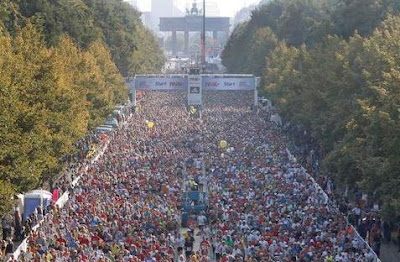Right from the beginning of the discovery of Berlin as a Property Investment Hotspot for International Investors in 2004 the area of Prenzlauer Berg or "Prenzlberg" to the locals was one of the focus points. It soon became too expensive for reasonable investments and there still was a lot to do. At this point many tenants and investors tuned to the neighboring Friedrichshain. Still today Friedrichshain is more "studenty" whereas Prenzlauer Berg is more "Bohemian" with a higher level of rents (and income). Here is some backgound information:
Prenzlauer Berg was developed during the second half of the 19th century based on an urban planning design from 1862 by James Hobrecht, the so-called Hobrecht Plan for Berlin. Envisaged as a working-class district, its tenement houses (in German: Mietskasernen) were mainly inhabited by intellectuals, artists, and students in the former German Democratic Republic.
This area of former East Berlin is now perhaps the most sought after area to live for professionals and young families. The area was relatively unscathed by Second World War bombing, leaving street after street of intact 19th and early 20th century apartment buildings. It offers an abundance of beautiful pre-war ‘Altbau’ buildings, the vast majority of which have been completely restored since unification of the city. Rising property values have led to more wealthy residents moving into some areas of the borough.
It is close to central Berlin and has a lively café, bar and restaurant scene as well as several parks and green spaces. Popular places to go out include Kastanienallee, Kollwitzplatz (home to the sculptor Käthe Kollwitz), with its excellent Saturday market, Kulturbrauerei (an expansive brewery which has been transformed into a centre for culture and evening entertainment) and Helmholtzplatz. Keeping in rhythm with a slower, more livable pace, this area also abounds with several weekly street markets and the world-famous Mauer Park Flea Market every Sunday. This area is also home to countless advertising, design and media firms and traditionally the bohemian quarter of East Berlin,this is still a haven for artists and alternative culture, despite gentrification.
The varied history of Berlin comes to life in this neighborhood through its many diverse cultural and social offerings. Truly this is one of the most interesting places to take in all that this reborn city has to offer, which also makes for an ideal property investment opportunity in Berlin.
Over a period of only 3 years the purchase prices for apartments in Prenzlauer Berg rose from 2,300 €/m² to 3,000 €/m² while the rents in the same time span went from 7.30 €/m²/month to 9.24 €.
Because of its ambiace Prenzlauer Berg is attractive as a location for condos to be used by he investor as much as a buy to let investment in rented apartments. Attractive developments with excellent potential and both options are coming up for sale . More detailed information can be found here:
www.falkenberg-solutions.com.




